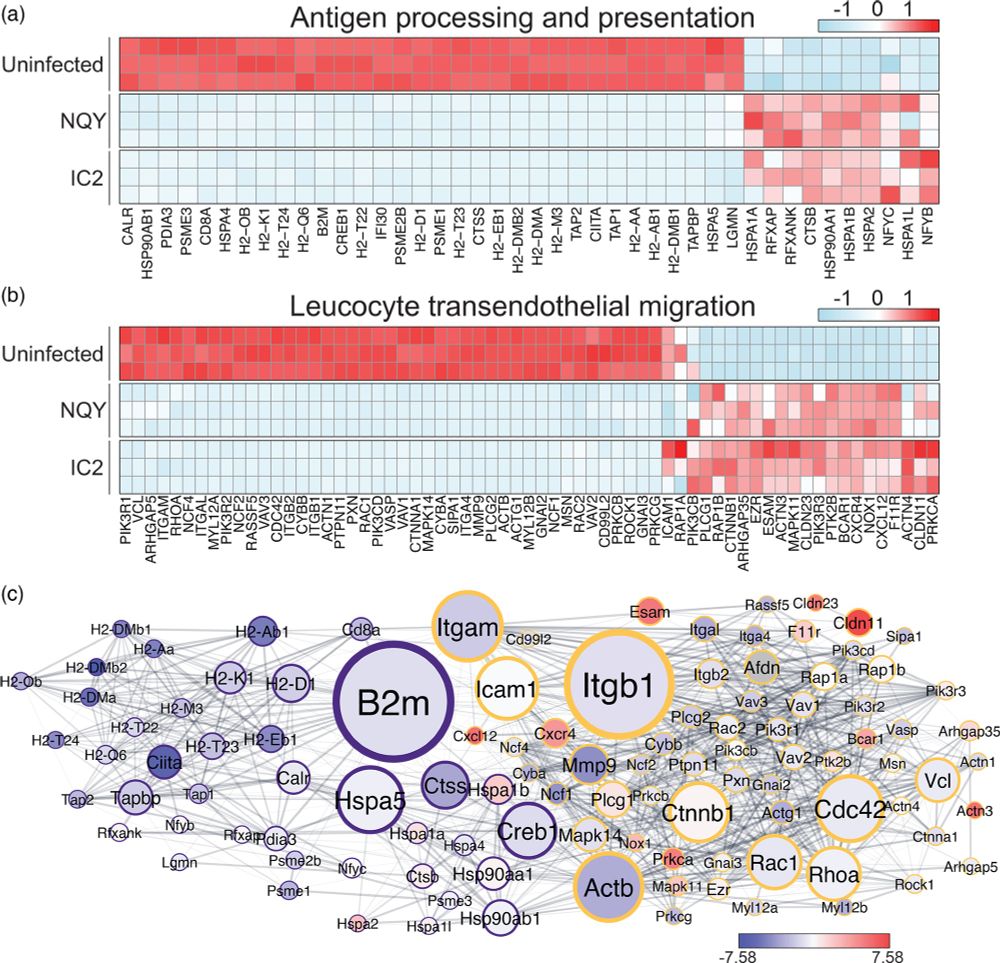
#flu

#flu
Our new Science paper shows how elevated body temperature can protect against severe influenza and that avian-origin viruses escape this defence.
This is likely one reason why bird flus and some pandemic influenzas can be so severe.🧵
www.science.org/doi/10.1126/...

Our new Science paper shows how elevated body temperature can protect against severe influenza and that avian-origin viruses escape this defence.
This is likely one reason why bird flus and some pandemic influenzas can be so severe.🧵
www.science.org/doi/10.1126/...
Projects available with Drs Ben Towler, @francespearl.bsky.social, Mark Paget, Edward Wright, or Leandro Castellano.
Application deadline: 23rd January 2026 👇
www.surrey.ac.uk/wessex-one-h...
Projects available with Drs Ben Towler, @francespearl.bsky.social, Mark Paget, Edward Wright, or Leandro Castellano.
Application deadline: 23rd January 2026 👇
www.surrey.ac.uk/wessex-one-h...
1. Integrating bat and fungal pathogen ecology to understand epidemiology
2. AI-augmented metagenomics to map British bat virome and assess zoonotic potential
Deadline 26 January 2026 🦇🧪🦠🌍🌐
www.surrey.ac.uk/wessex-one-h...
1. Integrating bat and fungal pathogen ecology to understand epidemiology
2. AI-augmented metagenomics to map British bat virome and assess zoonotic potential
Deadline 26 January 2026 🦇🧪🦠🌍🌐
www.surrey.ac.uk/wessex-one-h...
www.biorxiv.org/content/10.1...

www.biorxiv.org/content/10.1...
Here, with @asimovpress.bsky.social, I write about inconsistencies in the canonical story, and explore a few alternative theories about what really happened in that St. Mary's lab in the summer of 1928.

Bacteria can “remember” past environments through genetic & biochemical imprints helping them adapt and thrive! 🦠🧠
#MicroSky
www.nature.com/articles/s41...

Bacteria can “remember” past environments through genetic & biochemical imprints helping them adapt and thrive! 🦠🧠
#MicroSky
www.nature.com/articles/s41...
Full paper: www.biorxiv.org/content/10.1...
@zebrafishrock.bsky.social @izfs.bsky.social @zfinmod.bsky.social @modelzebrafish.bsky.social
@cp-cellhostmicrobe.bsky.social ! We revealed a previously unrealized diversity of viral immune-evasion proteins that selectively destroy different cyclic nucleotide signals used in bacterial immunity.
www.sciencedirect.com/science/arti...

@cp-cellhostmicrobe.bsky.social ! We revealed a previously unrealized diversity of viral immune-evasion proteins that selectively destroy different cyclic nucleotide signals used in bacterial immunity.
www.sciencedirect.com/science/arti...
📰 News link
www.science.org/content/arti...
🔬Preprint
www.biorxiv.org/content/10.1...

📰 News link
www.science.org/content/arti...
🔬Preprint
www.biorxiv.org/content/10.1...
'Disrupting RNA-sensing pathways reduced the competitiveness and viability of mouse PSCs, and mouse embryos lacking Mavs—a key gene in RNA innate immunity—led to markedly improved human cell survival and chimerism.'
www.cell.com/cell/abstrac...

'Disrupting RNA-sensing pathways reduced the competitiveness and viability of mouse PSCs, and mouse embryos lacking Mavs—a key gene in RNA innate immunity—led to markedly improved human cell survival and chimerism.'
www.cell.com/cell/abstrac...
👉 minister.agriculture.gov.au/collins/medi...

👉 minister.agriculture.gov.au/collins/medi...


(1/18)
(1/18)


www.nature.com/articles/s41...

www.nature.com/articles/s41...

Our HIDEN-SEQ links the "dark matter" genes of your favorite phage to any selectable phenotype, guiding the path from fun observations to molecular mechanisms.
A thread 1/8

Our HIDEN-SEQ links the "dark matter" genes of your favorite phage to any selectable phenotype, guiding the path from fun observations to molecular mechanisms.
A thread 1/8
I am very excited to finally share what has been the main focus of my PhD for the past almost 3 years! It is about viral dark matter and a powerful tool we built to shed light on it. 🧬💡
Continue reading (🧵)

I am very excited to finally share what has been the main focus of my PhD for the past almost 3 years! It is about viral dark matter and a powerful tool we built to shed light on it. 🧬💡
Continue reading (🧵)
Cracking the code of Yellow Fever Virus entry! 🔑🧪
YFV uses multiple LDL receptor family members, including LRP4, LRP1, and VLDLR, as entry receptors, offering new targets for antiviral strategies
#MicroSky #VirusSky
www.nature.com/articles/s41...

Cracking the code of Yellow Fever Virus entry! 🔑🧪
YFV uses multiple LDL receptor family members, including LRP4, LRP1, and VLDLR, as entry receptors, offering new targets for antiviral strategies
#MicroSky #VirusSky
www.nature.com/articles/s41...
In primary human nasal epithelia, #Omicron BA.5 & XBB show enhanced ciliated-cell tropism and a striking cilia-gene shutdown plus apoptosis/inflammation, unlike ancestral virus or BA.1.
Preprint:
www.biorxiv.org/content/10.1...

In primary human nasal epithelia, #Omicron BA.5 & XBB show enhanced ciliated-cell tropism and a striking cilia-gene shutdown plus apoptosis/inflammation, unlike ancestral virus or BA.1.
Preprint:
www.biorxiv.org/content/10.1...


